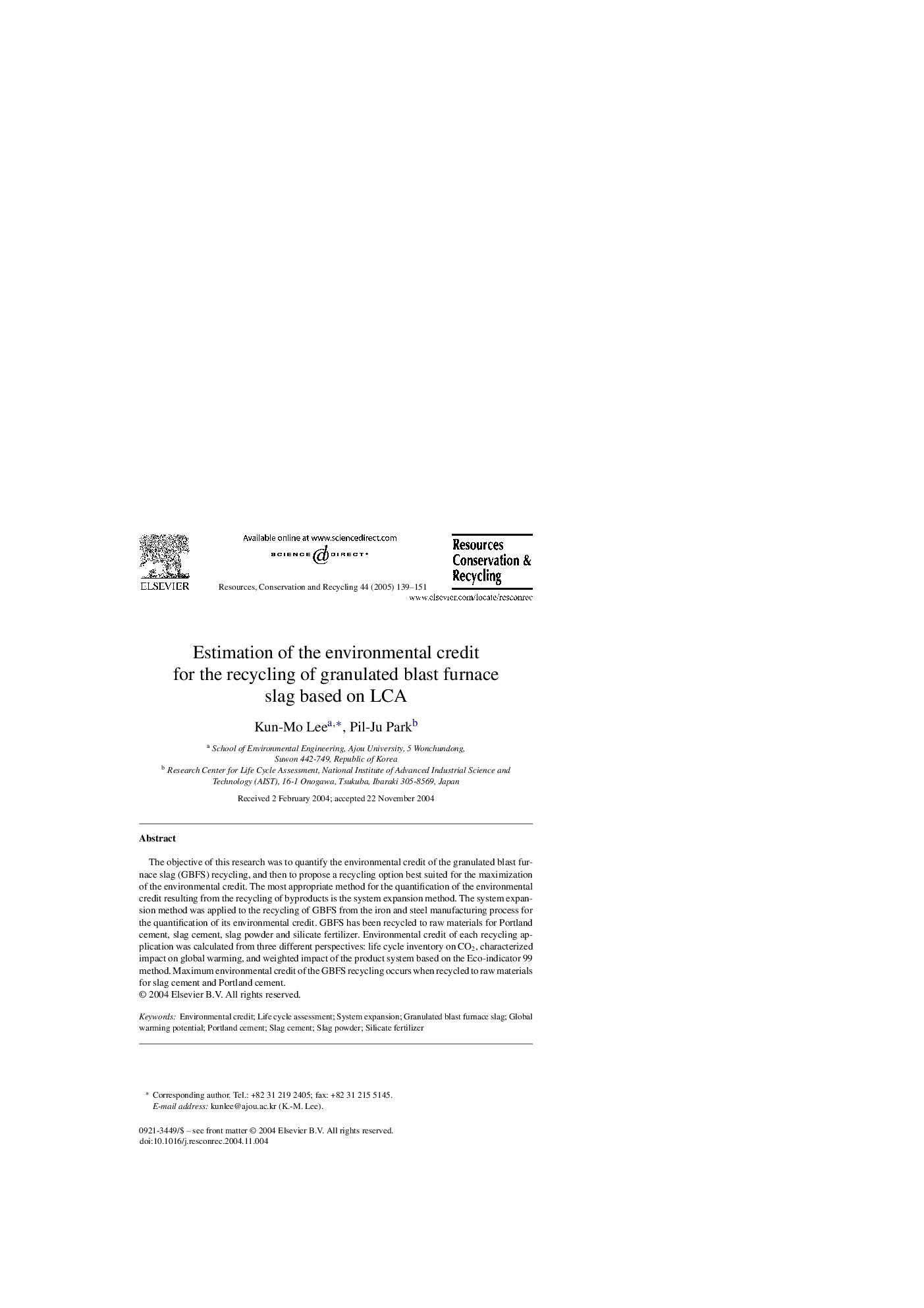| Article ID | Journal | Published Year | Pages | File Type |
|---|---|---|---|---|
| 10508191 | Resources, Conservation and Recycling | 2005 | 13 Pages |
Abstract
The objective of this research was to quantify the environmental credit of the granulated blast furnace slag (GBFS) recycling, and then to propose a recycling option best suited for the maximization of the environmental credit. The most appropriate method for the quantification of the environmental credit resulting from the recycling of byproducts is the system expansion method. The system expansion method was applied to the recycling of GBFS from the iron and steel manufacturing process for the quantification of its environmental credit. GBFS has been recycled to raw materials for Portland cement, slag cement, slag powder and silicate fertilizer. Environmental credit of each recycling application was calculated from three different perspectives: life cycle inventory on CO2, characterized impact on global warming, and weighted impact of the product system based on the Eco-indicator 99 method. Maximum environmental credit of the GBFS recycling occurs when recycled to raw materials for slag cement and Portland cement.
Keywords
Related Topics
Physical Sciences and Engineering
Energy
Renewable Energy, Sustainability and the Environment
Authors
Kun-Mo Lee, Pil-Ju Park,
